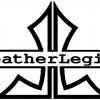
kgg
Contributing Member-
Posts
3,291 -
Joined
-
Last visited
Profile Information
-
Gender
Male
-
Location
Ontario, Canada
-
Interests
sewing machines in general, 3D printing
LW Info
-
Interested in learning about
All aspects of sewing
-
How did you find leatherworker.net?
net search on leather sewing machines
Recent Profile Visitors
20,939 profile views
kgg's Achievements

Leatherworker.net Regular (4/4)
-
Why??? To help speed up the bobbin winding process even further is to have a bobbin being filled while you sew. I always have a second spool of thread in the color and size setup that is dedicated for winding the bobbins. i) install a empty bobbin on the winder, ii) thread the bobbin, iii) engage the winder. iv) bobbin fills as I am sewing v) bobbin winder disengages went the bobbin is full When the bobbin in the machine runs low or is empty replace I replace it with the newly filled bobbin. Rinse and repeat. kgg
-
I came across a youtube video which I think should be a must view for anyone that uses a sewing machine, domestic or industrial. It helps eliminate the black magic of how stitches (chain-stitch and lock stitch) are formed with a history of the development of sewing machines in very simple terms. Ever wonder why the long grove is on needles?? kgg
-
What I'm seeing: First photo: i) Stitch length seems different The stitch length seems to be smaller on the right then on the left. ii) Loose stitch on the left. iii) skipped stitch on the right side. iv) Distance to the edge of the binding fold over varies slightly. This probably is being cause by the leather piece either not having a straight edge, not being feed into the binding folder just right, a slight downward pull being applied as the item goes over the backside of the cylinder arm causing a slight shift or a pressure foot slightly off. Are you holding both threads when starting the seam??? Are you using a table top attachment while binding?? It would help in feeding the leather into the binder. As a note I set my binder so it is just leaves a very small space, a couple of mm, between the forward position of the pressure foot and the binding attachment. Any photo's of your binding setup may help. kgg
-
Couple of questions: 1. How thick is the leather you are trying to bind with?? 2. How thick is the leather you are trying to put the binding over?? 3. What is the total thickness of the edge including the binding. 3. Are you using a 90 degree binder or an inline?? I suspect the problem is that there isn't enough space within the binder attachment to allow for the 5 layers of leather, the edge of the article and 4 layers of binding leather. I have seen this happen when using a basic inline binder and the problem was easily fixed by bending the the top part of binder up slightly and opening the exit end up. If you are using a 90 degree binder the exit end is fixed which I don't think can be modified and the largest opening I have seen is like 6mm. I think using a inline binder would work better or have a 90 degree binder custom made. The problem with the inline is that there are not any that I know off that can be mounted directly to a cylinder arm and none of the table top attachments allow for accessories to be mounted to them like edge guides or binding attachments. Me being me and a cheap geezer I 3D print my own table top attachments to allow for this. kgg
-
can anybody please help me find this "sole trimmer"?
kgg replied to TakashiOkada's topic in Leather Machinery
The photo with the nameplate info appears to be for the motor which was made in Croatia. The wording "tvornica elektricnih strojeva subotica" converts to say "Electrical Machine Factory, Subotica". I would send your photo's to USM ( https://usm-americas.com ) and see if they could match up something. kgg -
What do you think of the Mitsubishi DU-105?
kgg replied to Zonker62's topic in Leather Sewing Machines
I would like to see the path of the top thread starting from the spool of thread on the thread stand following it as it passes through each thread guide or tensioner to the eye of the needle particularly the tensioner assembly. kgg -
What do you think of the Mitsubishi DU-105?
kgg replied to Zonker62's topic in Leather Sewing Machines
Could you post a few photo's of your top thread from the spool to the eye of the needle. I think this is a fairly easy problem to solve. kgg -
can anybody please help me find this "sole trimmer"?
kgg replied to TakashiOkada's topic in Leather Machinery
You probably get better help if you listed the manufacturer of the machine. kgg -
will juki 1341 accessories fit this Typical tw3-343?
kgg replied to TakashiOkada's topic in Leather Sewing Machines
I should have used sticking rather then binding. (knee lift shaft is sticking.) Glad the machine works good with the knee lift. kgg -
The case you have shown is very similar or the same as the ones made by Libertaz Leathers ( libertazleathers.com ) and here is a video of how they are made. kgg
-
Yes and No. My two cents: i) Looks like the cooling fan is incorporated in the motor pulley. So getting a smaller motor pulley with the cooling fans maybe limited. ii) Appears to be a 550 watt 6 coil brushless servo motor which would probably work. A 12 coil 550 watt would be better but would cost more (2X). iii) The start up speed could be as high as 500rpm which will give you startup jerk. A speed reducer would help eliminate that or go with a brushed servo motor rather then the brushless servo motor. iv) Make sure the operating manual comes with the setup. v) Like @AlZilla has mentioned the control box is going to be in a awful location under the table so you are going to be down on your hands and knees to change the settings. kgg
-
I really admire those that hand sew and tool leather but for me I don't have the temperament or the artistic ability. So for me it is all mechanically aided, sewing machines, presses, skiver, embosser, 3D printer, etc. kgg
-
I do agree with @Dwight but the grit of the sand paper selected has a lot to do with the speed of the machine. Too course a grit say 60 at slow speeds will tear chunks out while too fine a grid at high speed will burn. I use 120 grit on my machine which is a modified variable speed bench mounted buffer with a 4 3/4" long X 3"diameter sanding disk at 3400 rpm. kgg
-
I took another approach to punching oblong holes in leather belts. I 3D printed two simple jigs, one for the belt buckle holes and one for the other end. kgg
-
Here is a good threading video for the CB341 starting at about the 8:11 mark for the tension disc. You should really view it from the beginning just to cover off any other potential problems. kgg



